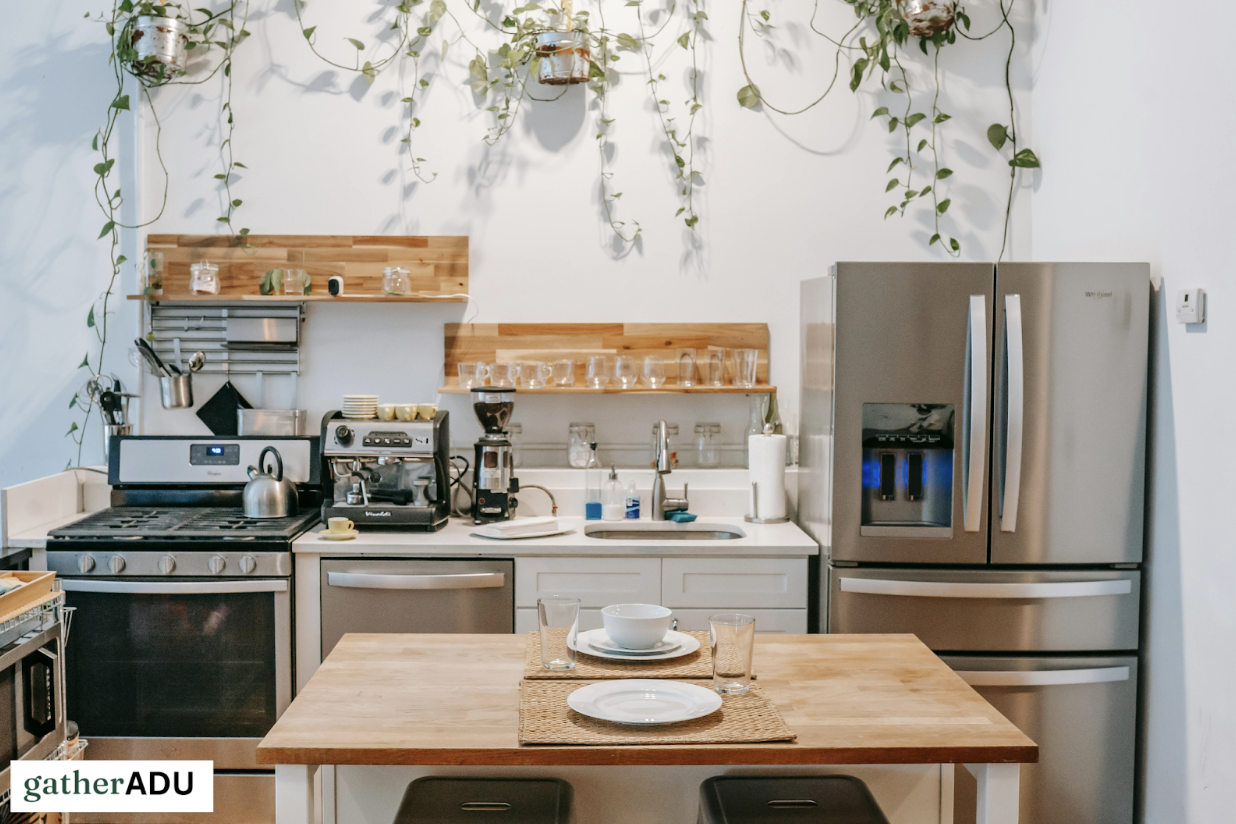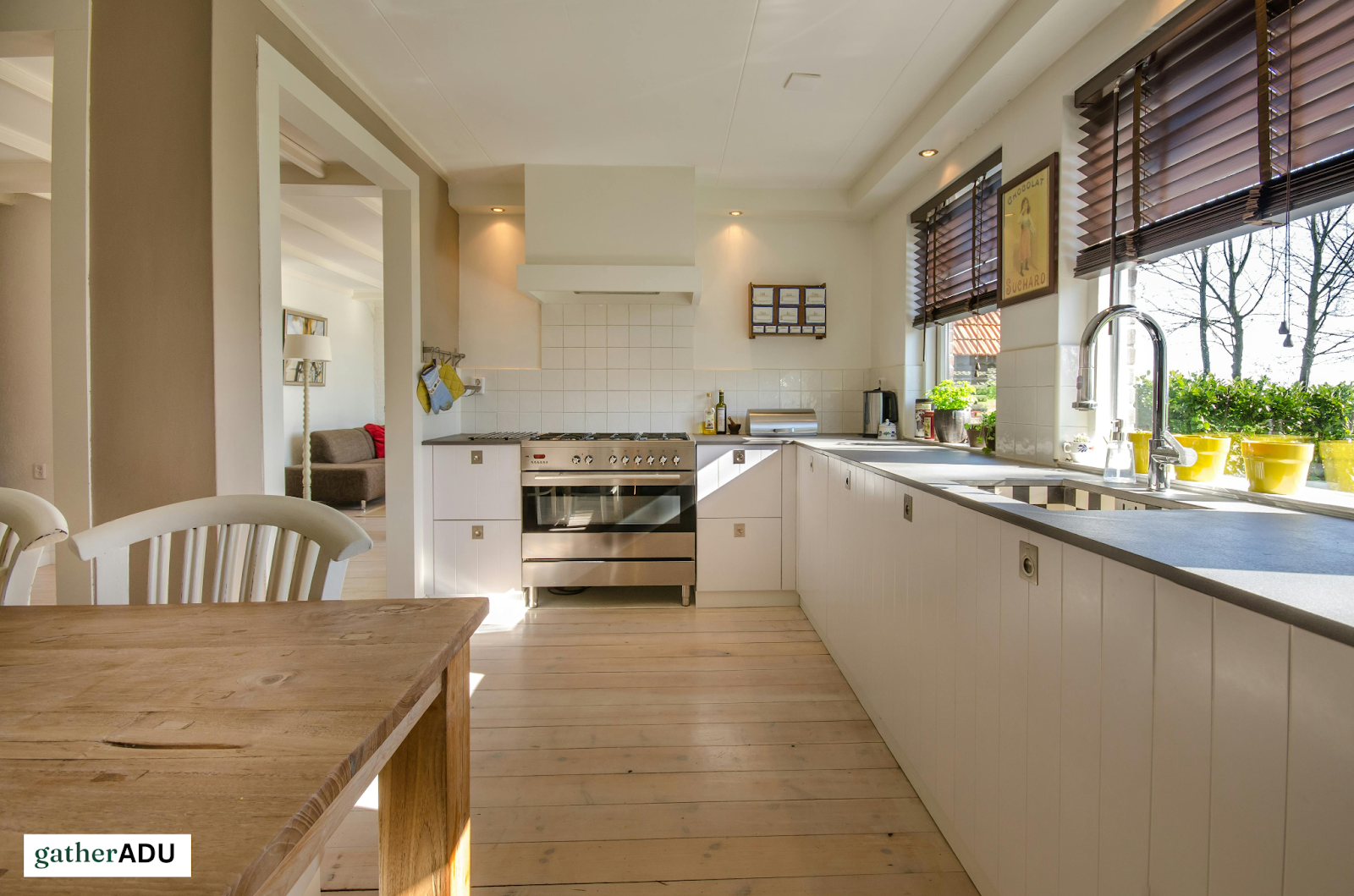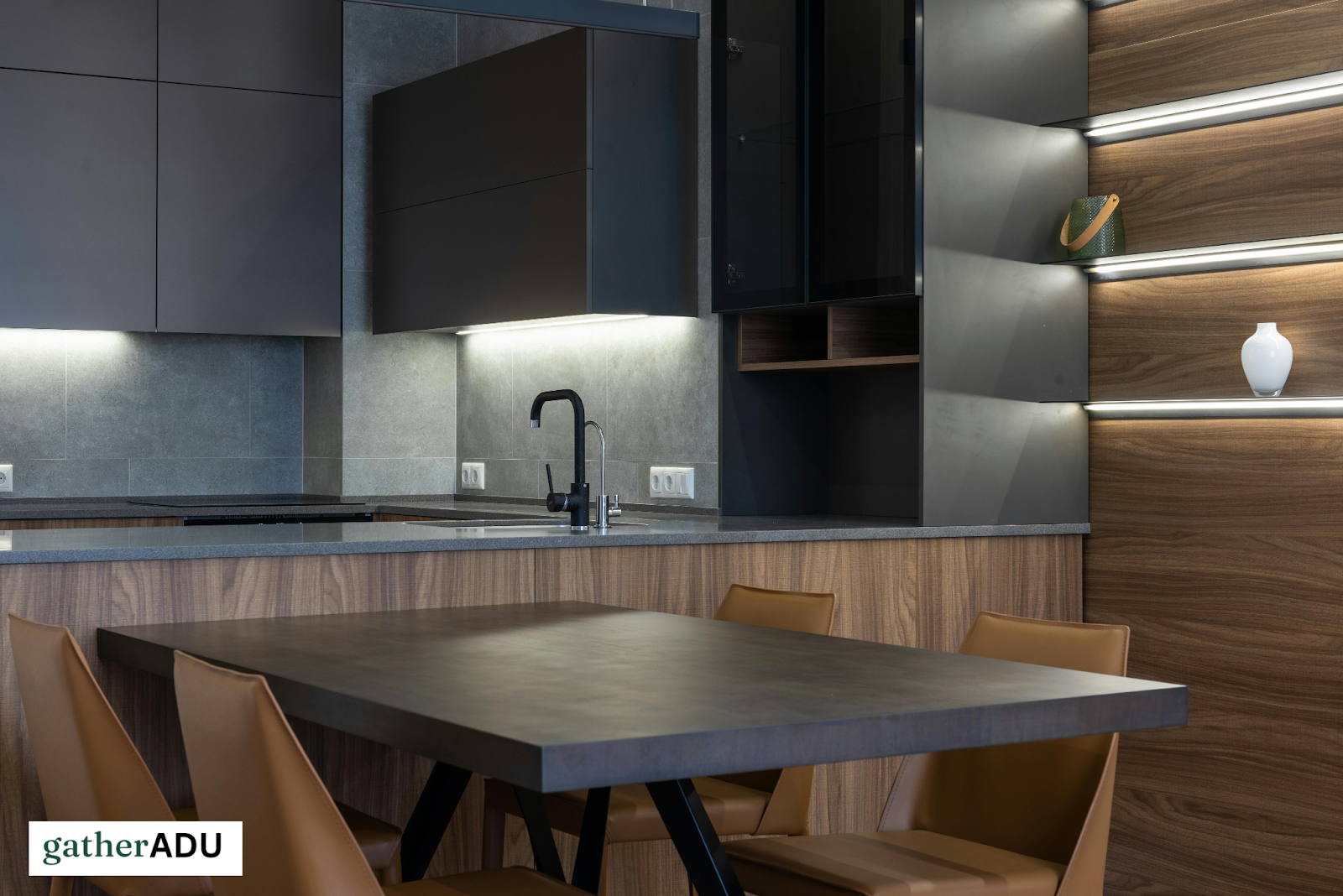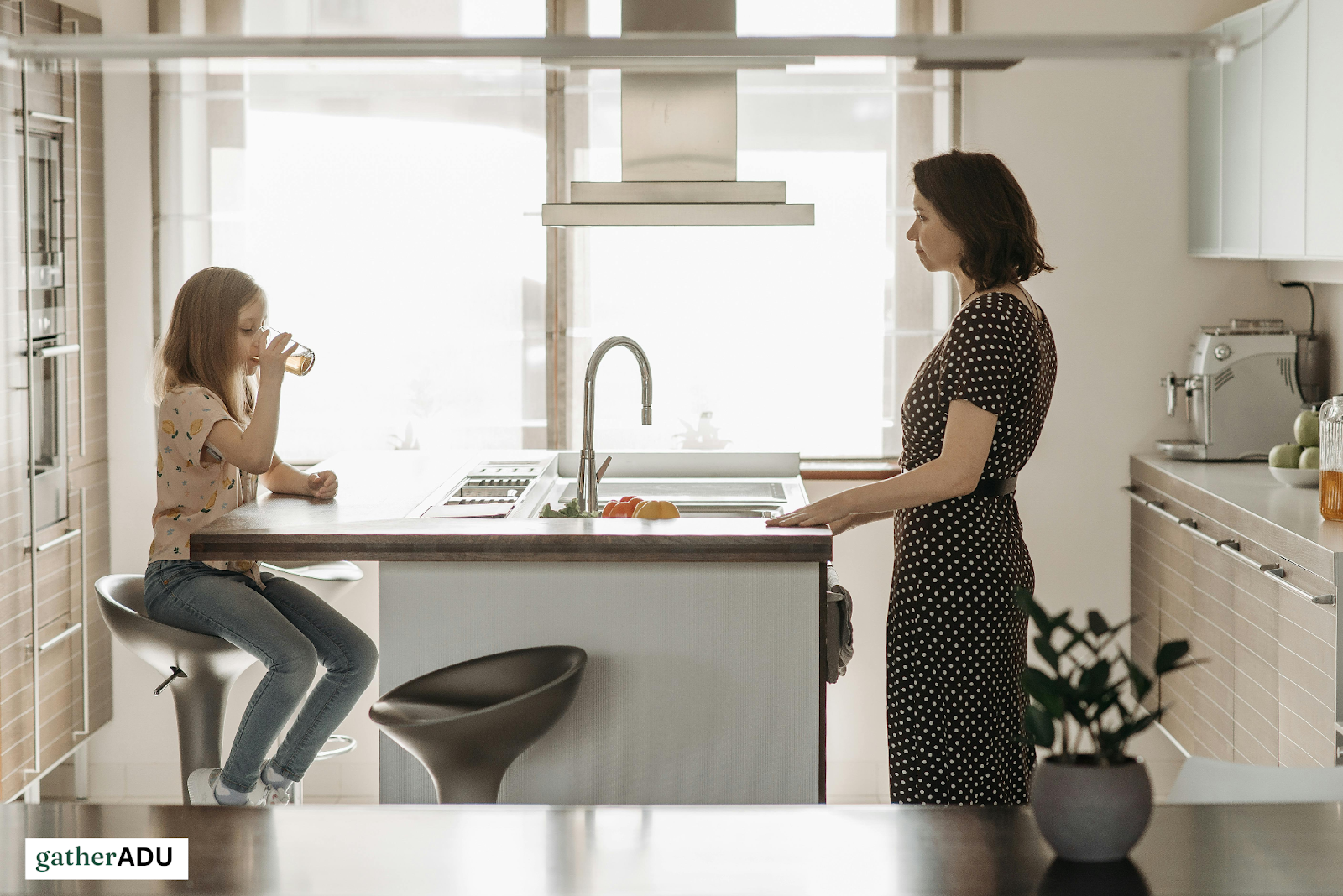ADU Knowledge
October 16, 2025
How to Blend Your ADU Kitchen Design with Existing Home Aesthetics?

.png)
Schedule a free appointment with one of our ADU experts.
Get ADU QuoteOr call: (323) 591-3717
Blending an ADU kitchen with your primary home maintains visual harmony, functional flow, and cohesive style. Using matching materials, finishes, and color schemes ensures the spaces feel connected, while architectural consistency preserves character, making the ADU kitchen both practical and seamlessly integrated with the primary residence.
Moreover, subtle transitions enhance integration, and Gather ADU specializes in guiding homeowners to achieve this seamless cohesion. Consistent flooring, complementary lighting, and cabinetry that echoes the main home’s design create harmony. Even small details, like similar hardware or trim, tie the spaces together, ensuring the ADU kitchen feels like a natural extension of the original home.
Choosing materials and finishes that match your home’s existing textures and colors ensures seamless integration. Coordinating countertops, cabinets, and flooring with the primary residence creates visual cohesion, making the ADU kitchen feel like a natural, stylish extension rather than an isolated or mismatched space.
Consider durable materials that complement your primary home’s palette, while also standing up to kitchen use. Wood grains, stone textures, and metallic accents can mirror existing surfaces. Matching cabinet finishes or countertop colors with subtle contrasts helps distinguish the ADU kitchen while maintaining a natural flow. Deliberate material choices balance style, durability, and cohesion.

Using consistent lighting styles, temperatures, and placements helps unify the ADU kitchen with your primary home. Task lighting ensures functionality, while ambient and accent lights highlight design features. This approach creates a cohesive, welcoming atmosphere that visually and functionally connects the two spaces seamlessly.
Additionally, using similar pendant lights or under-cabinet illumination creates visual continuity. Innovative lighting solutions can adapt brightness levels for different moods while echoing the main home’s style. These choices enhance cohesion and provide a functional, comfortable cooking environment, making the ADU kitchen appear as a thoughtfully integrated part of your home rather than an afterthought.

Maximizing storage in an ADU kitchen while maintaining cohesion involves using custom cabinets, pullouts, and hidden compartments. Additionally, these solutions keep essentials organized, prevent clutter, and seamlessly integrate with the main home’s style, ensuring the kitchen is both functional and visually harmonious.
Examples include:
Ultimately, thoughtful storage in an ADU kitchen ensures every item has a designated place, keeping the space organized, efficient, and visually aligned with your primary home. Consequently, this careful planning enhances daily usability, reduces clutter, and adds lasting value by maintaining both functionality and aesthetic cohesion.
Creating functional zones in an ADU kitchen enhances workflow while maintaining visual harmony with the main home. Strategically arranging cooking, prep, and storage areas ensures efficiency, minimizes clutter, and preserves a cohesive aesthetic, making even compact kitchens feel organized, balanced, and highly usable.
Open sightlines, consistent countertop heights, and matching cabinet styles maintain cohesion across spaces. Integrating islands or small breakfast bars can provide extra functionality without disrupting the visual connection. Coordinating appliances and fixtures ensures the ADU kitchen remains practical and stylish while blending seamlessly into the home’s overall design.

Many homeowners face challenges integrating an ADU kitchen with their primary home, resulting in cluttered layouts, style mismatches, and inefficient use of space. These issues can lead to costly redesigns, wasted square footage, and daily frustration, making professional design guidance essential for creating a functional and cohesive kitchen.
At Gather ADU, our expert designers solve these challenges by creating kitchens that maximize storage, flow, and aesthetic cohesion. We handle every detail from materials and cabinetry to lighting and appliance selection- ensuring your ADU feels like a natural, functional, and stylish extension of your home.
To match ADU cabinets with your main home, first, select similar materials, finishes, and colors. Additionally, coordinating hardware and trim enhances visual continuity while maintaining ADU functionality, ensuring a seamless transition that respects the primary residence’s style and creates a cohesive kitchen design.
No, lighting should maintain consistency with the main home. By matching fixture styles, tones, and brightness levels, you preserve visual cohesion. Although task or accent lighting can vary slightly for functionality, the overall aesthetic should align with the primary residence to ensure comfort and a unified design.
Yes, flooring can create a seamless connection between the ADU and the main home. For example, use matching or complementary materials, colors, and patterns. In addition, consistent flooring enhances visual flow, supports cohesive design, and improves durability, making the kitchen and adjoining spaces feel integrated and thoughtfully planned.
No, but coordinating complementary tones is essential. Specifically, matching wall colors, cabinets, countertops, and accents ensures harmony without exact replication. Consequently, this approach maintains aesthetic balance, creates visual cohesion, and allows the ADU kitchen to blend naturally with the primary home while expressing its own character.
Architectural details significantly impact integration. By replicating or echoing crown molding, trim, ceiling profiles, and other design elements from the main home, you enhance continuity. Ultimately, subtle cues like these reinforce cohesive style and make the ADU feel like a deliberate, intentional extension of the primary residence, enhancing overall visual unity.
.png)
Not sure where to start with your ADU project?